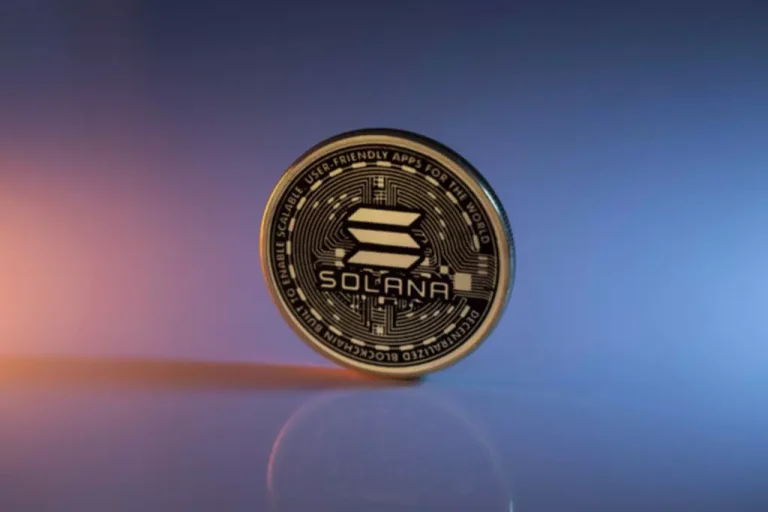Amm Defined: Automated Market Makers & How They Work
The order book is basically a list of presents from clients to purchase or promote a certain quantity of Bitcoin at a particular worth in Euros. We introduce folks to the world of trading currencies, both fiat and crypto, via our non-drowsy academic content and tools. We’re also a community of traders that help one another on our daily buying and selling journey. AMMs assist new DEXs who could be faced with a small variety of patrons and sellers trading regularly – or low liquidity – early on in their existence. An interface facilitating non-custodial asset swaps on the most attractive charges in DeFi. Their introduction and rapid development within the DeFi sector spotlight a shift in direction of extra accessible and decentralized trading platforms.

In other words, if your deposit represents 1% of the liquidity locked in a pool, you’ll obtain an LP token which represents 1% of the accrued transaction fees of that pool. When a liquidity supplier needs to exit from a pool, they redeem their LP token and obtain their share of transaction fees. To ensure adequate liquidity, AMM DEX incentivizes the users, referred to as liquidity providers (LPs), to contribute digital belongings to the liquidity pool. Technically, anybody can deposit their crypto property in liquidity pools in exchange for a percentage of the buying and selling fees. More LPs locking their digital assets minimizes the chances of price slippage and improves the liquidity of the DEX.
How Market Makers Work: Amm And Pmm
Exploiting value differential is called arbitrage and is crucial for efficient markets of any kind. In order for an automated order guide to offer an correct worth, it needs sufficient liquidity – the volume of buy/sell order requests. If liquidity is weak then there will be huge gaps in the value that users are ready to purchase and promote at. This is called price inefficiency or Slippage – the place the worth that a commerce is positioned at differs from the executed price as a end result of there could be insufficient liquidity to cover the whole order.

You can use crypto price aggregators like Coinmarketcap or Coingecko to get a sense of the market depth obtainable for swapping a specific coin. This turns the standard asset administration model on its head the place the client pays a financial service supplier to maintain a selected portfolio steadiness. The magic that allows a decentralised change to mechanically create markets with out relying on the standard intermediary is a mix of maths and code. Decentralised Exchanges as an alternative amm crypto meaning rely on AMMs operating on blockchains like Ethereum to set the costs of asset pairs and maintain enough liquidity. In simpler terms, when you buy a security – let’s say some firm stock – and you abruptly want to sell it, there has to be a counterparty prepared to purchase the asset. The assurance that there’ll all the time be a counterparty to finish the transaction on a inventory change is the primary goal of market-making.
Be Taught First Trade Cfds With Digital Money
This article explains what automated market makers are, how they work, and why they’re important to the DeFi ecosystem. You can use them in many kinds of fee, or trade them within the decentralized change. Similarly, you’ll be able to only send belongings to the AMM’s pool by way of the AMMDeposit transaction kind. The amount that a liquidity supplier can withdraw from an AMM is predicated on the proportion of the AMM’s LP tokens they maintain in comparability with the entire number of LP tokens excellent. When you trade in opposition to an AMM, the change rate adjusts based mostly on how much your trade shifts the balance of property the AMM holds.
Still, Flash Loans are additionally being used to manipulate and distort crypto asset costs and generate massive returns for these with the skills to understand the dark facet of DEFI. As belongings provided by liquidity suppliers (buyers and sellers) develop in the pool, so does DEX’s liquidity. Somewhat just like slippage, worth influence refers to fast value changes that depend upon the asset’s liquidity. The distinction from slippage is that value impression is caused by the user’s trade rather than market motion. Risk of losses for liquidity providers when the value of deposited belongings adjustments unfavorably. A slippage risk in AMMs refers again to the potential change within the worth of an asset between the time a commerce order is submitted and when it’s really executed.
Lp Token Foreign Money Codes
They can use data from real-world external value oracles like Chainlink to find out the current market worth of the assets involved. Uniswap is an Ethereum-based decentralized change that leverages AMMs to offer a liquidity-rich DEX for merchants. Balancer made CMMM well-liked by pooling its liquidity into one CMMM pool somewhat than multiple unrelated liquidity pools. CMMMs stand out with some attention-grabbing use cases such as one-tap portfolio services and index investing.

A market maker facilitates the process required to provide liquidity for buying and selling pairs on centralized exchanges. A centralized change oversees the operations of merchants and offers an automated system that ensures trading orders are matched accordingly. In other words, when Trader A decides to buy 1 BTC at $34,000, the trade ensures that it finds a Trader B that’s willing to promote 1 BTC at Trader A’s most well-liked change rate. As such, the centralized trade is more or less the intermediary between Trader A and Trader B. Its job is to make the process as seamless as possible and match users’ buy and sell orders in record time. Automated market makers (AMMs) are decentralized exchanges that use algorithmic “money robots” to supply liquidity for merchants shopping for and promoting crypto belongings. An automated market maker (AMM) is the underlying protocol that powers all decentralized exchanges (DEXs), DEXs assist users exchange cryptocurrencies by connecting customers instantly, with out an middleman.
Algorithmically Decided Trade Costs
Another acronym use case can even stand for Proactive Market Maker, when referred to the DoDo DEX protocol, copying the habits of AMMs and human merchants. A cutting-edge monitoring tool providing accurate, detailed and well-organized crypto portfolio data. “To the moon” is slang in the crypto group that refers to a belief that a particular cryptocurrency’s worth will quickly enhance significantly. The trajectory of AMMs points in direction of an innovative monetary future the place buying and selling is extra inclusive, decentralized, and driven by advanced applied sciences. Provides easy and open access to liquidity and trading, making it user-friendly for a wide viewers. While first-generation AMM models have been groundbreaking, they arrive with inherent problems.
Liquidity providers (LPs) deposit their belongings into these pools and are rewarded with a fraction of the charges generated on the AMM. This practice, generally known as yield farming, incentivizes LPs to contribute to the liquidity pool. Price discovery in Automated Market Makers (AMMs) differs essentially from traditional monetary markets. In AMMs, prices usually are not set via an order e-book however are decided algorithmically based on the property within the liquidity swimming pools. These swimming pools are funded by customers who deposit their tokens into a sensible contract. In return, they receive liquidity tokens, which characterize their share of the pool.
The main distinction between order books and AMMs is that the pricing and order matching are automated in AMMs. On the opposite hand, order books facilitate worth discovery by allowing buyers and sellers to set the prices at which they are prepared to trade an asset. Early AMM fashions usually face challenges in efficiently utilizing the capital in liquidity swimming pools. VAMMs do not maintain actual belongings however use mathematical formulation to simulate trading and liquidity provision. They are primarily utilized in derivative platforms to allow trading with out the necessity for conventional counterparts. Users, known as Liquidity Providers (LPs), contribute their assets to these swimming pools and, in return, obtain LP tokens.
This is where market provide and demand act to change the preliminary change value of BTC, which was equal to 25,000 USDT. LP tokens use a special sort of currency code within the 160-bit hexadecimal «non-standard» format. The remainder of the code is a SHA-512 hash, truncated to the first 152 bits, of the two assets’ forex codes and their issuers. (The belongings are placed in a «canonical order» with the numerically lower currency+issuer pair first.) As a end result, the LP tokens for a given asset pair’s AMM have a predictable, constant foreign money code. For instance, if you created an AMM with 5 ETH and 5 USD, after which somebody exchanged 1.26 USD for 1 ETH, the pool now has four ETH and 6.26 USD in it.
Traditional market trade processes, involving shares, treasured metals and different belongings, rely on purchase and sell orders, providing numerous rates and forming an order guide on the exchange. In these processes, there is always a need for a counterparty — a buying and selling pair — to make a commerce. As AMMs operate without human interaction, there is a risk of bugs and glitches occurring with sensible contracts. While developers continually work to establish and repair these points, they’ll still occur, inflicting inconvenience and potential losses for users. When a user wants to commerce on the decentralized trading platform, they interact instantly with the AMM, swapping one token for one more at a worth determined by the liquidity pool’s algorithm.
Unlike traditional exchanges that rely on particular patrons and sellers, AMMs allow users to commerce instantly, 24/7. For occasion, Uniswap V2 supplied traders the ability to create liquidity for any ERC-20 token pair. And V3 presents concentrated liquidity, a feature that lets liquidity suppliers earn related buying and selling fees at lower risk, since not all their capital is at stake. Underpinning AMMs are liquidity pools, a crowdsourced assortment of crypto property that the AMM makes use of to commerce with folks buying or selling certainly one of these property. The users that deposit their belongings to the swimming pools are often recognized as liquidity suppliers (LPs). In the context of DEX, you presumably can define AMM as a protocol-driven pc algorithm that automates the method of providing liquidity on the cryptocurrency trading platforms.
The platform allows customers to trade a broad range of ERC-20 tokens on the Ethereum community and has recently expanded to help tokens on other networks such as Polygon and Optimism. AMMs allow buying and selling of a variety of crypto property that will not be out there on traditional exchanges. These platforms assist varied tokens, together with newly launched or much less popular ones. Unlike traditional systems that depend on patrons and sellers to create liquidity, AMMs use liquidity swimming pools and algorithmic price willpower, which ensures constant market liquidity and availability. DAMMs regulate their pricing and liquidity provision strategies dynamically based mostly on market circumstances, aiming to offer higher capital effectivity and reduced price impact.
What’s An Automated Market Maker?
Liquidity in conventional or centralized exchanges (CEX) is supplied by market individuals – consumers and sellers. The buy orders are filled by matching them with the promote orders within the order book. Instead of counting on an middleman to supply liquidity, decentralized exchanges (DEX) use automated market maker to facilitate trades by way of pricing algorithms and liquidity pools.
Before making monetary investment selections, do consult your financial advisor. BitDegree goals to uncover, simplify & share Web3 & cryptocurrency training with the masses. Join hundreds of thousands, simply uncover and understand cryptocurrencies, price https://www.xcritical.com/ charts, top crypto exchanges & wallets in one place. Since there may be extra USDT now than before in the pool, this implies there’s extra demand for BTC, making it extra useful.
